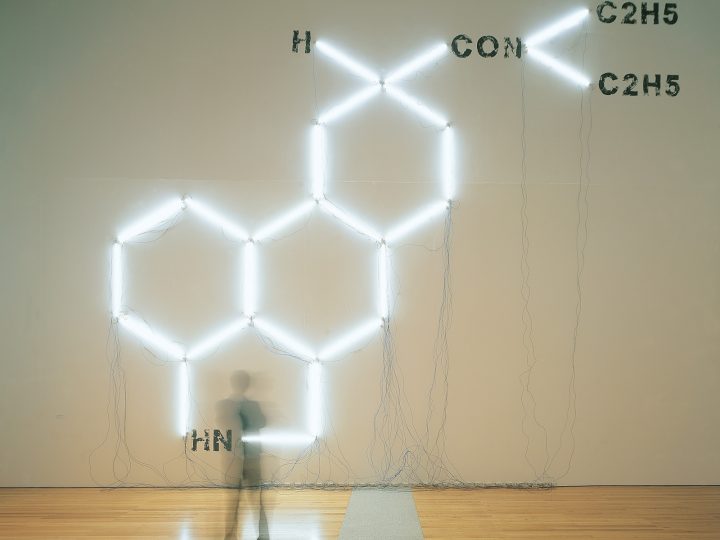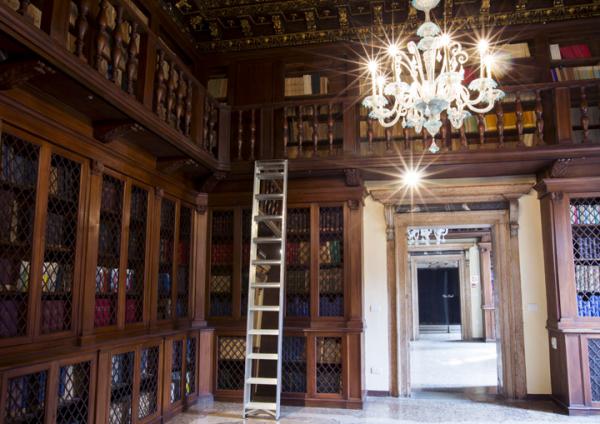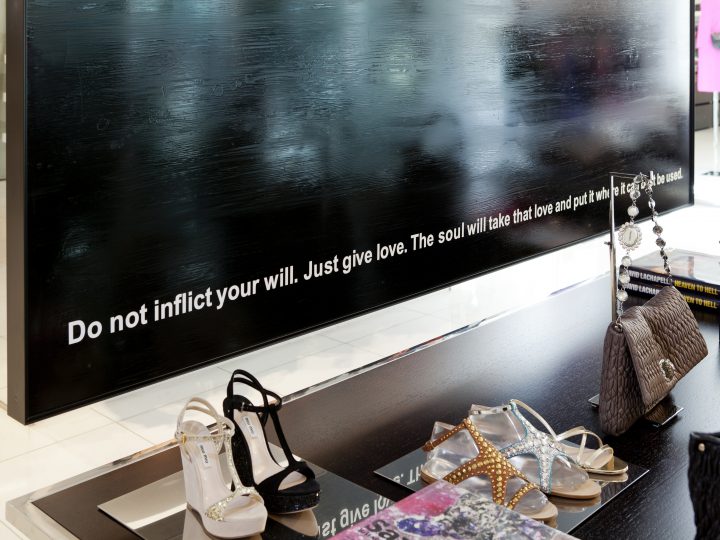
João Louro researches into the fields of the written word through his multiple structures, presenting the viewer with an unknown landscape and creating a universe in which the visible is not in agreement with its usual context
Louro is an intensely conceptual artist, whose intensity is shown in his presentation and interpretation of the world, in his musical phrasing of experience and in his commitment to taking things to the limit through a striking unfolding of calculated tension and control.
Since the nineteen nineties Louro’s series and projects have involved a development of a well-informed questioning of the meaning of the image as an object or sign, and of language as a symbolic representation, all motivated by artistic and cultural convictions, as well as by aesthetic and sociological decisions.
Through elements taken from Minimalism and Conceptual Art, Louro builds his own world according to the trace that his readings, music and the cinema have left in his path; fusing these traces he builds a sort of autobiography, a personal diary, in which the texts or events are charged with meaning.
The work of João Louro is not an art that is categorised, he does not intend to close off any interpretation and thus allows us to move within the little-travelled territory of the ambiguous. For him the aesthetic value in contemporary art is necessarily linked to meaning: form and content must coexist.
In his creations Louro emphasises the visual language and its methods of expression, and considers interpretation as a form of communication between the work of art and the spectator, attempting to constitute new spheres of thinking in order to feel, reflect and interchange.
The multiplicity of ideas that are made real in João Louro’s works does not break the unity of the whole, but rather enrich it, with some works being complemented by others, providing an access path to diversity and showing after all that the discursive nucleus of his work is fundamentally language, the encounter between word and imagination.
João Louro uses photography taken from magazines, newspaper, television or cinema for his iconographic references. He writes in neon, intentionally seeking to articulate narratives. He uses road traffic signs in order to be able to broaden the syntax of the image. He blanks out his images, revealing their content through texts, thus creating a dialogue between the narrative and the brush-stroke, given that the painting erases the image and the phrase provokes the imagination. He reproduces the covers of books, greatly increasing their size, in order to incite us to read all of his literary, poetic and philosophical idols, and using them to construct a surrounding for inhabiting them.
Of special note among this wealth of expressions are the series Dead Ends and Blind Images, in both of which João Louro appropriates and uses language in different manners and with different possibilities, seeking to connect with people through sensations, suggestions and thoughts, more than through an objectual focus. The role of the viewer is fundamental in both series, given that for Louro the value of the work of art is that which arises from the link created between the work and the viewer.
The works Dead Ends are related to the challenge of language. In them he uses road signs as symbols that are instantly recognisable; only afterwards does the viewer reach the second level of reading, which are the contents. This variable language is no more and no less than an open possibility for establishing new conditions for the productions of meaning. The Dead Ends stand as objects at the same time as being concepts due to their strong physical component.
In the series Blind Images the viewer is faced with a canvas on which the image has been blanked out, hidden beneath a coating of glossy acrylic and a glass panel that produces the effect of a mirror. At the bottom of the canvas there is a text alluding to or descriptive of the cancelled image, thus provoking different approaches to what is visible or varying perspectives through which one can consider the image; helping us to understand that the gap between words and images is not as great as that which exists between words and objects, or between culture and nature. At its origin this series has the ceaseless saturation of images we undergo nowadays. Louro states that this is due to the “erosion of the word, in which the signified ceases to coincide with the signifier…. The word is a fine skin that has lost its contents.
The relevance that Louro grants to the language that describes the image even more greatly highlights the importance of literature, poetry and cinema as analogous forms of interpreting the world in which he structures his work and the type of meanings that it suggests.
The texts that appear in his paintings are not storylines, but rather a manner of showing the importance of the concept of presence that language suggests to us and is so difficult to pin down. His works avoid a unidirectional interpretation and are the product of their interaction with a surrounding, which helps to enrich the possible readings of his works.
João Louro’s conceptual work is a questioning about the limits and the expressive capacity of the image, reflecting outside the narrow margin of the work of art itself.
João Louro is interested in generating new semantic aspects and raising doubts about norms accepted by our visual culture, creating invented places and imagining scenes and inhabiting words that allow us to cultivate our deepest desires and aspirations.
María de Corral



